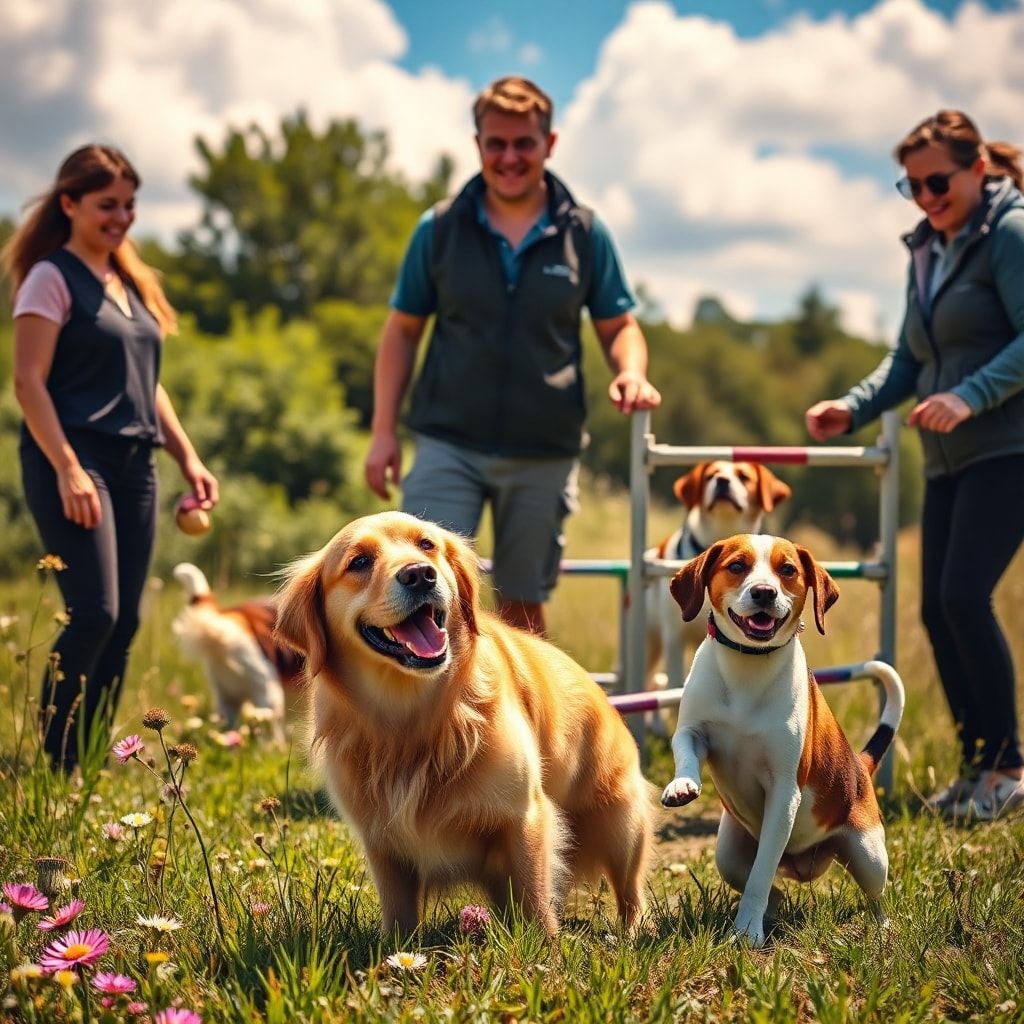Ever since he could remember, Noel loved dogs! Not just his own, but even those that belonged to his neighbors and friends. And, they loved him back! He understood them effortlessly-their every action and movement! It was like he had a gift and they related to him as if he was one of their own! Quite naturally, then-Noel chose the career path of being a dog trainer! Like Noel, dog trainers are adept at communicating with dogs and positively influencing their behavior, making them more adaptable, disciplined and trained for human environments.
Types of Training Provided by Dog Trainers
“Dog training is teaching a response to commands, or the performance of actions not necessarily natural to the dog, and also raising a dog accommodated to his environment by modifying natural digging, barking and eliminating behaviors. Dog training is defined as the purposeful changing of a dog’s behavior,” Wikipedia notes. Dog trainers can help dogs interact and socialize better with humans and their domestic environments; help them become more obedient; and also empower them with specialized training for specific activities. These may range from “law enforcement, search and rescue, hunting, working with livestock, assistance to people with disabilities, entertainment, dog sports,” and “detection and protecting people or property,” Wikipedia states.

How Do Dog Trainers Train Dogs
Dog trainers believe- that dog training is both an art and a science! While there are multiple ways in which dogs can be trained, these methods need to be adapted to the temperament of the dog. Irrespective of methods chosen by dog trainers, what really matters is –“…how quickly they work, and how enjoyable they are for dog and handler,” Hannah Harris writes on ‘HowStuffWorks.’ She identifies a number of basic tried and tested methods that dog trainers use successfully.
Operant Conditioning
“Dog training typically centers on operant conditioning,” states Harris, elaborating that- “Since dogs naturally begin salivating when offered food, food is an unconditioned stimulus. No conditioning or special training is necessary to cause the dog to salivate, which is an unconditioned response.” Dog trainers use this instinctive stimulus to train dogs. “The first scientist to define this concept was B.F. Skinner, who studied the work of Russian physiologist Dr. Ivan Pavlov on animal behavior,” she shares.
Dog Trainers Use Progressive Reinforcement Training
“When we are rewarded for a certain behavior, we are likely to repeat that behavior. When we are punished for a certain behavior we are likely to stop. This type of learning is active and voluntary; it depends on the actions of the learner,” and the same is applied in dog training, Harris observes-providing a picture of what the ‘negative and positive reinforcement’ training is like. When using this method, dog trainers generally use food and sometimes affection as the “reward” and the “lack of food or affection” as a punishment. While many question how ethical doing so is-dog trainers assert that this method works!
Using Markers in Dog Training
Understanding the basic nature of a dog and the various developmental stages that he/she goes through, are vital to his/her training. It needs to be noted, that- as the dog progresses through different levels of training-dog trainers use a number of methods in succession or in combination for the dog to learn ‘positive behavior.’ During the initial period of training-one such method is the ‘Marker Training’ method. Here, “The trainer uses a sound, word, or clicker to ‘mark’ or immediately indicate the moment a dog is correct with a behavior,” states The Association of Professional Dog Trainers. “A marker is followed by reinforcement with food and/or verbal praise. The marker creates a brief separation between food or touch and the performance of the behavior, so food is a reward, not an enticement. Behaviors can be either shaped, captured or lured using a marker,” it declares.
